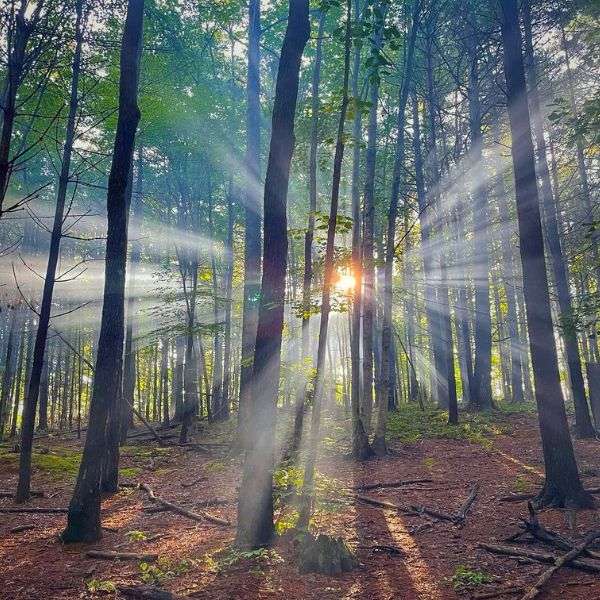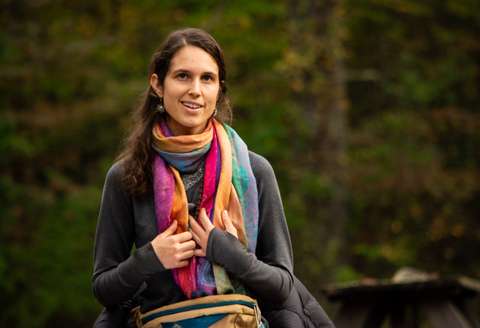Q. Tell us a bit about yourself and your background:
As a young child, I was highly attuned to the myriad sufferings of the human heart and, though I did not have the words for it at the time, I was highly motivated to identify the elements that lay a foundation for healing and foster a sense of thriving in the human person. This is the thread of inquiry I continued to pursue into young adulthood, and continue to pursue still today. Because of my own experiences of healing in relationship with the natural world, I began reading and learning about nature-based therapy and wilderness therapy.
In 2016, I started working at Blue Ridge - first with the adolescent students, and then on the team of field staff inspired to launch the emerging adult program in 2018. This coming Spring, I will graduate with my degree in Clinical Mental Health, and am grateful to have had the opportunity to collaborate with a professor during this time to develop a Nature-Based Therapy Certificate for graduate students. I am fully invested in the possibilities of healing available to young people when they embark upon a forested quest to retrieve their inherent wholeness and wellness, with earth beneath and sky above.
Q: What is your role in Emerald Arrow?:
I joined the Emerald Arrow (EA) team in the early days to support the program’s launch. As part of the staff team supporting EA’s launch, I helped implement the program structure and design. As a field staff, I helped implement EA’s consistent daily rhythm and therapeutically-informed practices, supported student self-inquiry through artistic expression and mind-body connected movement, collaborated with students in the creation of meaningful ceremony through which they recognize and celebrate each other, provided mentorship, and offered guidance related to the wilderness survival skills that are foundational to any deep-woods experience.
Because graduate school prevented my full-time presence in the field, my role shifted to staff training and program development. In this role, I design and facilitate EA field staff trainings, as well as provide staff mentorship. In addition, I collaborate with Anne to continue enrichment of program materials and resources available to students.
Q: Tell us about the journey that led you to Emerald Arrow:
I was inspired to join the core staff team launching the EA program, not only because I love working with young people traversing the life season that is emerging adulthood, but also because of the intentionality of the program Anne designed, tailored so specifically to meet the needs of emerging adults.
So many of my own values in the kinds of experiences I seek to create for those I work with were inherent to the program. The more I learned from Anne about the details of the program, the more I felt invested in the Emerald Arrow mission and vision. Some of the areas that particularly stood out to me included the incorporation of ceremony, opportunities for artistic expression, advanced communication skills, core practices shared by the group as a community, intention in the start and end of each day, body-centered practices like yoga, the careful attention to meaningful graduation celebrations, as well as the emphasis on maintaining a rich group culture with song, laughter, movement, play, and self-expression. It is memorable for me, in particular, that Anne guided a ceremony for the individuals in the staff team who would launch EA as a component of one of our trainings and program development workshops.
The care and intention that Anne has poured into this program since its inception is and has always been reflected on every level, which continues to inspire me in collaboration with her.
Q: Why would you recommend young adults attend Emerald Arrow?
There is a unique and special quality about EA, which I felt immediately when the program was first presented. In EA, there is a particular emphasis on the importance of therapeutically-informed routines that support emotional regulation, increased resilience, mind-body connection, and strengthened self-awareness that also serve as practices students can carry directly into their lives after the woods. It was clear that these routines and practices would serve as the rhythm that students could rely on when so much within them felt chaotic, uncertain, and confusing. And I loved that it was inherent in the programmatic design that these routines and practices would be carried out as surely as the sun rises each day.
This laid an incredibly strong, sturdy foundation from the very beginning for each student. I also appreciate the advanced communication skills young people are introduced to and become very familiar with in the course of their time in the program, which I witnessed increase the sense of connection students felt with one another and themselves. Perhaps one of the most unique elements of EA is the emphasis on ceremony, through which students are given an opportunity to design meaningful experiences for each other. I loved witnessing the ways in which students moved one another to tears by giving each other the rare experience of being witnessed and honored for their accomplishments of the heart.
Q: What's a typical day in Emerald Arrow like?
A typical day in Emerald Arrow is full. We awake and begin the day with a morning practice of cultivating mindfulness in community with one another, as well as self-reflective journaling. After this, students begin to wash hands, prepare the morning meal, purify their water for the day, collect firewood for the later day meal or for warmth in the winter, or work on journal assignments. At the beginning of the morning meal, students will share something that they are grateful for, as well as something that they are celebrating within themselves. Other activities that may occur during the course of the day are diverse and could include: therapeutic groups, bow drilling a fire, spontaneous dance circles, meal preparation, cooking over a fire, working through the program “Pathway” workbook, exploring a personal challenge or heart ache with a field staff mentor, designing and facilitating a meaningful ceremony for a peer, working on weekly therapeutic assignments, bathing, embarking upon a day hike, sharing depth of feeling, thought, or self-awareness with the group in circle, utilizing communication skills to speak one’s truth in relationship, participating in a poetry/painting/artistic expression circle, practicing yoga, breaking down and packing up camp in preparation for an adventure across the landscape, singing in the rain, watching the sun set, laying under the stars or trees for a mindfulness practice, or celebrating a peer as they step, teary-eyed, through their final ceremony that is graduation. The practices at the day’s end is often when I felt the greatest sense of peacefulness amongst the group. During the group “Clearing” practice, students are invited to lay their day’s burdens down aloud through clearing anything unresolved in relationship or within themselves. Following this, the day closes with a mindfulness practice and, on occasion, a gentle song sung at shelters.
Q: Any stories from the field you would like to share?
The ceremonies that I have witnessed students, or students and staff in collaboration, design and facilitate are by far the memories that stand out most. For example, I recall a student whose journey led her to a personal theme of “finding light amidst the darkness.” Because this was such a strong theme for her, a surprise ceremony was designed to recognize her arrival at a new stage of her journey.
This ceremony was planned in the dark of night and tea lights were lit, with crafted watercolor images placed at each of the tea lights that represented both the heart break she had traversed in the darkness, as well as the power, light, and beauty she discovered within herself and uncovered along the trail. As she walked this path of light in the darkness, she was sung a beautiful song about healing and learning not to fear the darkness. The many moments witnessing students amidst this type of presence, recognition, and connection was awe-inspiring.
I feel ever grateful and humbled to have had the opportunity to witness these students step through the sacred portal that is emerging adulthood in the special way Emerald Arrow supports them to.


